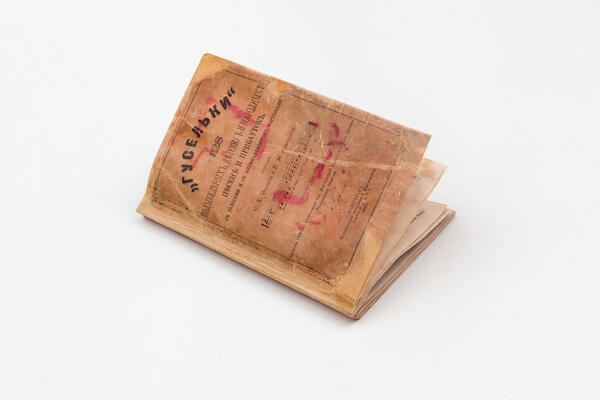The collection of the Vladimir Lenin House-Museum contains a thin book called ‘Guselki’ in a soft pale yellow cover. This is a collection of 128 lullabies, children’s, folk songs, and humorous sayings with voices and piano accompaniment.
The writer and ethnographer Nikolay Wessel and the music teacher Eugene Albrecht compiled “Guselki” in the late 1870s. They combined singing and piano parts in the songs so that the performer could both sing and play at the same time. Albrecht and Wessel believed that this would make it easier for children to remember the words and melody. Before publication, the innovative collection was approved by the board of professors of the St. Petersburg Conservatory of the Imperial Russian Musical Society.
In 1885, Pyotr Jurgenson’s music publishing house published its sixth edition of ‘Guselki’, a copy of which ended up in the Ulyanovs library. This firm had been publishing and selling musical literature since 1861. The first issues of the publication were spiritual and musical works by Dmitry Bortnyansky, edited by Pyotr Tchaikovsky, sheet music of works by Baldassare Galuppi, Stepan Davydov, and other composers. In addition to musical works, Jurgenson published educational literature, books on the history of music, and orchestral scores.
After Pyotr Yurgenson’s death, his son Boris inherited the business, but the firm existed only until 1918. After the October Revolution, one of the organizers of which was Vladimir Lenin, the publishing house was nationalized. On its basis, a publishing subdivision of the music department of the RSFSR People’s Commissariat of Education was established.



